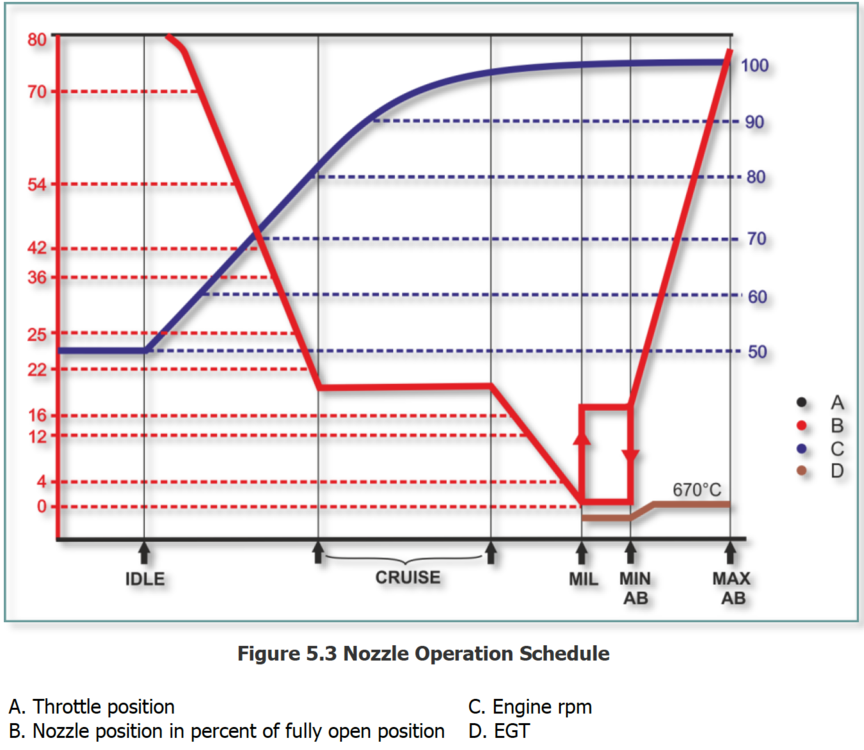-
Posts
131 -
Joined
-
Last visited
Content Type
Profiles
Forums
Events
Everything posted by Maxthrust
-
I saw a video on youtube showing the stick shaking like crazy. Looks pretty arcade
-
M3 did a fantastic job updating the cockpit, why not do the same with sounds? Nin's mod is good, but I would pay for a better sounds, it doesn't even have to be made by M3!
-

Choose the new name for WSO AI. It can't be Jester anymore
Maxthrust replied to phant's topic in DCS: F-4E Phantom
Perhaps HB can bribe duke to do voiceovers. he's out and open for business lol -
Thank you for the update and sparing the time for the V3 sound mod, Nin!
-
Can we have the nose wheel steering enable/disable and L/R brake axis assignments in 2022?
-
No one expected big news from M3 but this is not called for.
-
ho ho ho https://vdoc.pub/documents/mikoyan-mig-21-famous-russian-aircraft-70bjvn81fgs0
-
yea it's heavy but that's a lot of art work which I hope to appreciate over the years as the hardware improves. it's a "more for less" deal
-
M3 has not touched up the -21 in a long while. There has been other slow speed AoA/G availability discussion before which received the same runaround from M3, hence the dead forum.
-
I am a bit surprised that neither Nin or anyone else followed up with an updated mig-21 sounds mod. Current sounds (mod or not) is a core weakness of the module and leaves a lot to be desired in comparison to others..
-
guess who else is a legit nation? (hint; half-mast) will you ask that too?
-
Just like the A-10, the Su-25T has controls to turn on/off NWS. As it is even a slight rudder input during takeoff/landing cause either a wingstrike or runway excursion. Can this option be added?
-
- 4
-

-
What is the opinion on the AB sound here? I like how loud it is, but am not sure if this needs to be dialled down to be realistic. On the other hand, I wish they'd exaggerate the wind rush sound a bit for increased audio feedback.
-

Where is the JF-17 official manual? I can only find a chuck's guide.
Maxthrust replied to Napillo's topic in JF-17 Thunder
Yes I did. It's a gem waiting for me when they finish it. Since I don't have a lot of free time or any interest to F-16/18, I am focusing on the quality of experience here. So, no early access for me--I like older jets anyway.. -

Where is the JF-17 official manual? I can only find a chuck's guide.
Maxthrust replied to Napillo's topic in JF-17 Thunder
it is a new low introduced by the early access quality standards. -
I would love to have an F-4, but the Terminator 2000 version with the HUD, upgraded radar and INS. But I know most hardcore users would prefer to have a more common version such as Mig-21Bis and the Mi-24p we have. At this point if you are not a prop head only thing you can hope to have from M3 is the F-8 as they already secured it. Sad but yea oh well..
-
Also check https://www.476vfightergroup.com/downloads.php?do=cat&id=79
-

"Force feedback" of mig-21 does not work
Maxthrust replied to SASHIBA-11's topic in General Problems
Stall? When did you stall in the Mig-21 last lol? The thing is practically stall and spin proof, but the white vertical line in the middle of the instrument panel is to help pilot to visually neutralize the ailerons for spin recovery. All control surfaces are hydraulically boosted so probably very little feedback from the stick if any during a stall or spin, but I don't know for sure either. Also it doesn't have a stick shaker or pusher which would be super annoying in the middle of a fight; you are free to throw it around any way you like, just watch out for the G; that's where the FFB supposed to help imo. -

"Force feedback" of mig-21 does not work
Maxthrust replied to SASHIBA-11's topic in General Problems
I am interested in buying a FFB2 for the mig alone, and it is great that the stick follows the trimmer. Does it also provide resistance against pulling G as well? For example, the back stick force required to pull 4 G should be double the amount needed for 2 G. At least that’s how it is supposed to work in the real aircraft; stick force needed to pull a unit of G is constant and does not vary with speed. Otherwise I am not interested in arcade style FFB vibrations that do not exist in this aircraft. Why do you guys seem to be disappointed or not impressed by the Mig-21’s FFB? -
SPS supposed to cut off at 360 kph (?) but it is not modelled. Where is Shmal on that?
-
Nozzle operation is quite complex: VARIABLE EXHAUST 1 NOZZLE OPERATION Variable exhaust nozzle operation is controlled by throttle position and EGT. When the throttle is advanced slowly to MIL, nozzle opening decreases toward 0% until approximately 85% rpm. At this pofnt, the nozzle remains constant at a fixed cruise flat position ( 16% to 22%) until the throttle is advanced to where the nozzle starts to close toward 0%. The engine delivers best cruise power performance with minimum fuel consumption when on the cruise flat. When the throttle is advanced beyond the cruise flat toward MIL rpm, the nozzle continues to close until an EGT above 670° ± 5° is momentarily reached. The nozzle then opens via the T5 amplifier control to maintain EGT within limits. This is called Ts modulation. Just prior to T5 modulation, the nozzle is still mechanically controlled by the throttle. A throttle setting just prior to Ts modulation improves fuel consumption rates. When Ts modulation occurs, the nozzle opens slightly. During a rapid throttle burst from IDLE to MIL or MAX, the nozle closes to 43% to 53%, and stays at that opening momentarily. Nozzle hesitation at this point during acceleration minimizes exhaust back pressure to provide rapid acceleration and to preclude compressor stall. The nozzle then closes to 0% to 3% until T5 modulation occurs. At high altitude, low airspeed, when a throttle burst from IDLE or cruise to MIL or MAX is made, the nozzle opens toward the 43% to 53% area, then closes to approximately 7% to 12% to minimize rpm rollback and compressor stall prior to Ts modulation. During a throttle burst to AB range at low altitude, the main afterburner fuel flow is delayed by a sequence valve, momentarily causing the nozzle to pause (approximately 6% to 14% above MIL steady-state nozzle position) to allow afterburner pilot fuel to light off first; permitting a softer afterburner lightoff, 28% to 38% to maintain safe EGT operation. This nozzle position is known as the T5 lockout area. At high altitudes and low airspeeds, MIL nozzle opening may be larger and EGT lower than observed at low altitudes and high airspeeds. During ground operation at MIL power, nozzle opening should be approximately 0%. As the throttle advances into the AB range, openin~ should approximate 25% to 50% in mmimum afterburner, increasing to approximately 80% at maximum afterburner. Nozzle indication of 75% or hi~her indicates a fullopen nozzle (nozzle-limited) condition. Under this condition, fuel flow to the affected engine is reduced to maintain EGT within limits. If the Ts amplifier fails during MIL or AB power, retard the throttle to maintain EGT within limits if flight conditions permit. Ts AMPLIFIER SYSTEM The T5 amplifier system maintains a preset turbine discharge EGT within allowable limits during MIL and AB power operation by varying the exhaust nozzle opening. Operation is automatic with ac power supplied by the engine tachometer generator. If EGT is higher than the reference temperature, the amplifier causes the nozzle to open; if lower, the nozzle closes. The system operates primarily in MIL and AB power ranges.
-
X axis is the linear arc distance between the labelled detents. In order to test this one must have a linear throttle axis between the idle and mil detents via the user curve setting option. nevertheless the nozzle position seem to be a function of rpm, not throttle, and therefore the OP made his point with the discrepancy. Could ED comment on these findings please?



